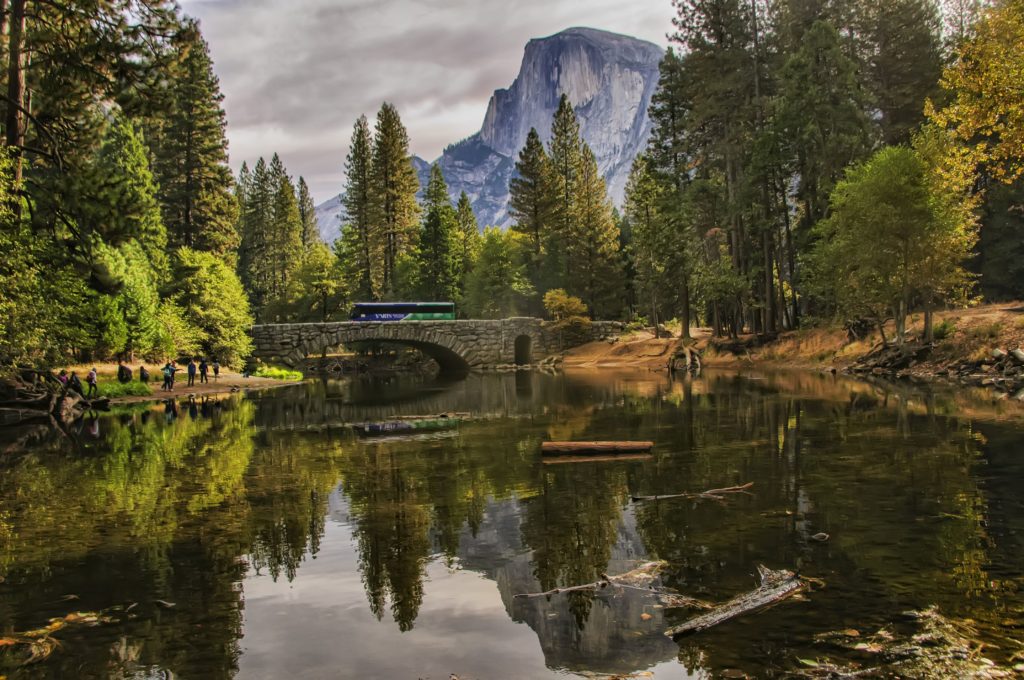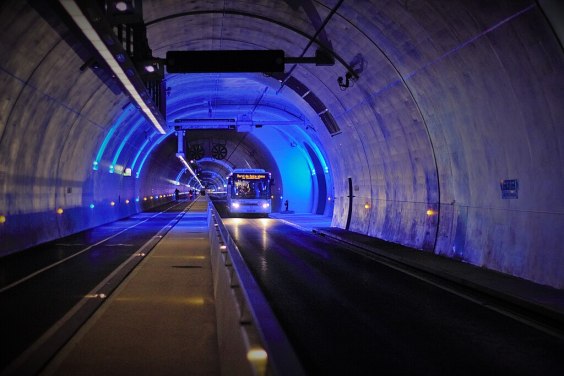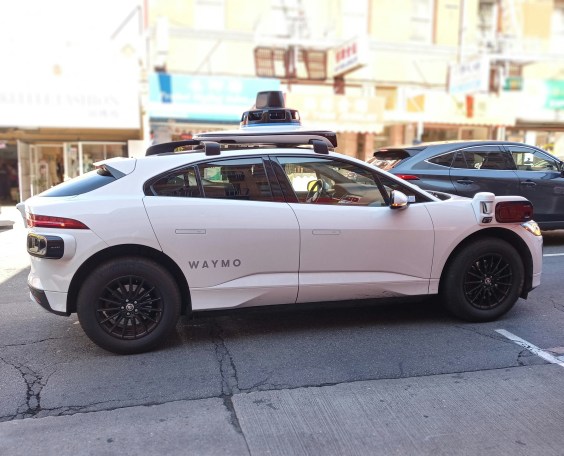Note: GJEL Accident Attorneys regularly sponsors coverage on Streetsblog San Francisco and Streetsblog California. Unless noted in the story, GJEL Accident Attorneys is not consulted for the content or editorial direction of the sponsored content.
The only public transit agency that takes visitors to Yosemite National Park was awarded $4.3 million in federal funds to jump start its transition to electric vehicles. The grant will allow the Yosemite Area Regional Transportation System (YARTS) to purchase electric coaches to serve park visitors and residents in surrounding counties.
“We provide an alternate to driving,” Cindy Kelly, YARTS assistant transit manager, told Streetsblog. “What we do is try to make people see that [they don’t have to drive their cars].”
The grant is enough to purchase six buses. YARTS currently operates a fleet of ten buses, with a charter agency providing an additional twelve during the peak summer months. This is a first step in the transition to a zero-emission fleet by 2040, as required by the California Air Resources Board.
According to Kelly and Mary-Michal Rawling, public affairs manager for the Merced County Association of Governments, which provides staff and operational support to YARTS, the electrification of the fleet aligns with the goals of the public transit agency.
The YARTS service began twenty years ago as a joint effort between the National Park Service and Mariposa, Merced, and Mono counties to decrease traffic and pollution in Yosemite. Kelly said the service started as a two-year pilot project. It has since expanded to provide service to the counties of Tuolumne, Madera, and Fresno, and has had more than a million riders since the service began. About nine percent of Yosemite's visitors enter by bus, including hotel shuttles. Only two percent of them arrive by public transit.
YARTS delivers visitors to Yosemite Valley, Curry Village, Yosemite Lodge, and the Yosemite Valley Center Park, so it will have the distinction of being the only public transit agency to offer a zero-emission commute into a national park once it is running the new coaches.
YARTS serves a range of routes that don't intersect, covering six different counties, so creating a single permanent charging station is unrealistic. Therefore, said Kelly, the agency plans to purchase electric coaches that include a portable battery charger, giving them a longer range than other electric buses.
The funding was made possible by the Federal Transit Administration’s Grants for Buses and Bus Facilities Program, which has funded 94 projects in 42 states for a total of $423 million. Among them are eleven electrification projects. This comes with a caveat, however. The current administration has been slow-walking funding for transit, so it remains to be seen when these funds will actually arrive.
Scott Gediman, public affairs officer for Yosemite National Park, said YARTS has been a good partner. In 2017, Yosemite became the first national park to purchase electric buses to operate within the park, and the park contributes about fifty percent of YARTS’ operating costs.
“Our goal is to go electric, but it will take time. We have about 22 buses that are hybrid, and as they need replacing that is what we will do: transition to an all-electric fleet,” Gediman said.
More than four million people visit Yosemite National Park every year and the number keeps rising, along with cars, traffic congestion, and emissions. During the peak season as many as 5,000 cars can pass through the park entrance every day.
“There has always been this big push to get more people onto transit,” Kelly said. “Nobody has the right solution, but we are constantly looking for innovative ways.”
Those innovative ideas include partnering with the park to offer free bus service during the National Park Service free gate days, or utilizing grants from the Low Carbon Transit Operations Program to offer free fares. YARTS also has agreements with other transportation agencies, including Amtrak and Greyhound, to help visitors plan their Yosemite trip -- park entrance included -- so they can rely solely on public transportation.
Gediman said he is realistic about it, and that new and improved electric coaches are not going to solve the traffic congestion issues affecting Yosemite. But if more people take transit, that means fewer vehicles in the park.






